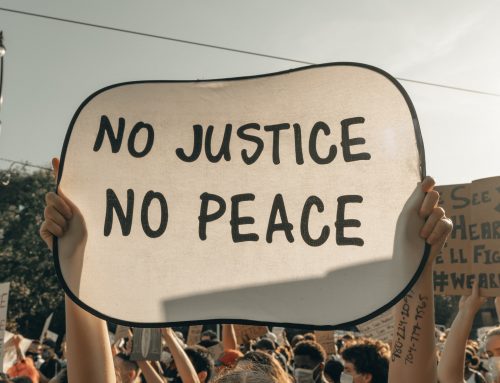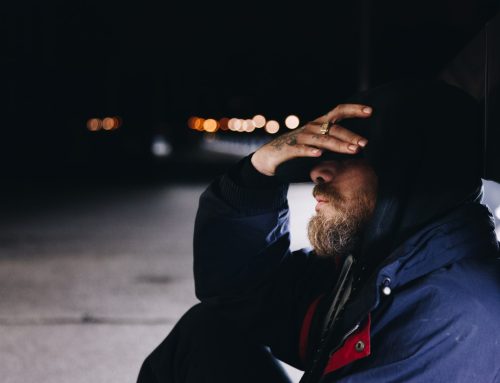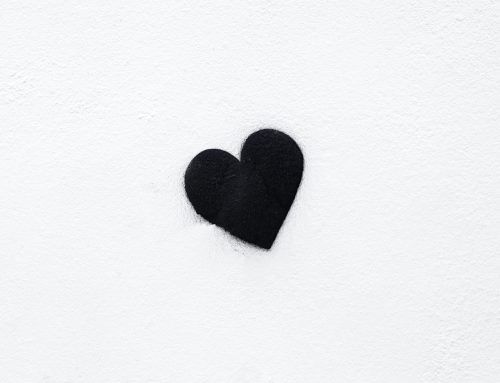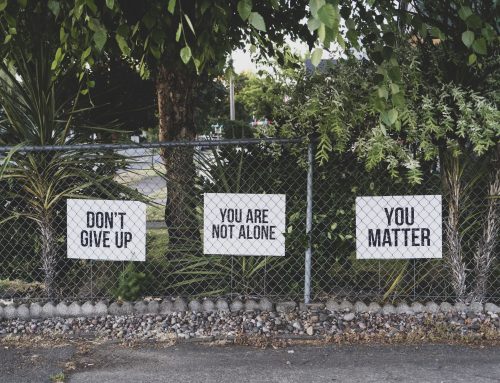I was eight years old when I realized that something was wrong with me. Things that came so easily to other people (raising my hand in class, climbing stairs, brushing hair, running) were suddenly the hardest part of my day. “Doesn’t this hurt you?” I would say to my friends, as we stood at the bottom of the staircase, their faces impatiently waiting for me to continue on. “No…” they would say, looking at me like I was nuts. And that’s when I first felt it: the beginning of a 30 year journey into feeling “crazy” for being in pain.
I don’t remember it all. My brain has thankfully blocked out a lot of it. But I have snapshots. As my symptoms worsened, and my mother started bringing me to appointments, the test results would all come back “normal.” Each one represented another misfire. Some of them were quite painful. I remember being put through a pulmonary function test, where I had to breathe as hard as I could through a tube. The test barely registered. My mother and the nurse yelled at me, calling me a stubborn teenager (Note: 25 years later, it was discovered that 10 out of 12 ribs were out of place, and all of my intercostal muscles were stuck together. I have probably never taken a deep breath, and I have never forgotten the sting of that injustice.) By the time I was 18, I was diagnosed with fibromyalgia. Good, I thought. Something explains me. The very next specialist I saw scoffed at this label: “Fibromyalgia is a ‘wastebasket’ diagnosis. If you want to be taken seriously, I would not advertise this to anyone.” WTF? (please note, this was 1992. We have come a long way in our understanding of FM, and I am not here to debate its merit.)
The word psychosomatic reared its ugly head around this time. Not only was I in pain all of the time, but now I was causing it with my own brain. The better practitioners tried to spin it in a more positive way: “It’s not that this is a bad thing,” they would reassure me. “It’s just that the source of your pain is not necessarily physical. And therefore an effective solution needs to address the mental nature of the problem.” Okay…
In spite of this rocky start, I chose to embrace my diagnosis, even though it never really fit. Nothing about my diagnosis told me what was wrong with me. In my gut I knew there was something. For the next 20 years, I went to therapists, psychologists, acupuncturists, specialists, chiropractors – you name it, I tried it. I ate clean, exercised, did Yoga, got more sleep, meditated. In short: I embraced the notion that everyone had been pounding into my head for years: my pain was my responsibility to fix with a better Lifestyle. And for a while, I actually got away with it. I felt healthy and strong, and I didn’t choose to label myself as “chronically ill.” I got married, finished Nursing school (barely. I almost failed out, had to take a year off, and had to go back a second time.) I tried to ignore the mounting diagnoses that I was accumulating in other systems of my body, and then had two beautiful babies…
I am holding the hand of my eight year old daughter. We are on a family trip, and we have just come out of the subway. We stand at the bottom of the stairwell. “Mama?” She looks up frowning. “Yes, babe?”
“It hurts when I go up stairs.”
Sadly, with this magical sentence, my daughter unlocked a 30 year mystery. Over the next two years, both of my children and I would be diagnosed with Ehlers-Danlos Syndrome, a genetic connective tissue disorder caused by a lack of collagen which causes, among many things, hypermobility of the ligaments and tendons, system-wide pain and problems, and explained everything about what had been wrong with me my entire Life.
I was right. It was something (cue the music, do the end zone dance.)
So, what now? How do I process years of feeling isolated and alone. Feeling like the crazy whiner who elicited eyeball rolls wherever she went? When do I get my payback? The big apology? My moment under the sun where everyone in my family says: “You were totally right, and we were wrong, and we weren’t there for you like we should have been.”
I don’t. And I’ve stopped expecting it.
My family did the best they could with what they knew. We are all doing the best we can, every day. I am exactly who I am today, because of exactly how I was raised. If I was raised differently, I would be different. And I love myself. My success in my Life has always come, because I have chosen to see obstacles as an opportunity for growth. And now as a parent, I realize we can teach our kids to face obstacles, or we can be the obstacle: they will learn either way. If I had to choose between them toughening me up or enabling me to feel like a victim to my circumstances, I would choose tough any day of the week. Of course, I would have liked more understanding throughout my childhood. My physical health is the way it is today, because I am a product of years of damage and ignorance. But my mental health is strong because I believed in myself and my gut instinct, even when all of the people and evidence surrounding me said otherwise. I never lost faith or hope that I would find my answer.
Ashley is a hyper-flexible mother of two bouncing (literally) kids. A lack of collagen has left them the world’s worst super heroes (but don’t tell them that). She writes about the wacky things that their syndrome has taught her family, and tries to keep everyone chuckling. You can read more at The Incredible Adventures of Malleable Mom.








Oh Gosh, that never ending search for answers to your pain, and the ‘all in your head’ narrative that goes with it, I understand that. And although it’s sad in some ways it makes me happy that your daughter, a source of joy for you, was finally the path to an answer. Thank you for writing.
Thank you, Helen. We are all on the healing path now 🙂
I’m so sorry that you had to go through that. I’m glad you have answers and can help your children navigate through the sea of chronic pain. Xoxo
Thank you for reading, Jess!
Jess, also has chronic pain! She has a bone disorder called MHE.
I don’t know what that is, but it sounds painful, Jess!
I could have written this! I had an almost identical experience getting diagnosed with HMS. Good to hear I’m not alone
Thanks, Sarah! Come join us over @FlexibleFamily. We have a lot of fun together laughing at our pain!
^Sarah, This is me. I can’t figure out how the stupid comment section works!!!!
Thank you for sharing this, Ashley. Chronic pain is so misunderstood.
Thanks for asking me!
What a touching story. You are just an incredible woman. Strong, resilient, faithful in yourself and deeply reflective. Your daughters are lucky to have you and we can all learn from your journey.
Thank you Carrie! It has been an ironic metaphor in my house with my daughter (and son) that though we are too stretchy, elastic is very resilient! I don’t know how I was made so mentally tough, but I am lucky indeed…I do have my ugly cry days, but that is part of the healing as well.
I am so very happy you shared your story. It showed that life is not always easy, we don’t have to settle, we can keep looking forward and reflecting and changing. I am so very happy you found your answers. I know the kind of closure that can provide. As for those ugly cries…I know them too! Yes it is all part of the process.
This is such an amazing, heartbreaking story. It’s amazing how ignorant some doctors could be in the 80s and 90s. I fell down the stairs when I was in middle school and have had hip and lower back pain ever since. My pediatrician at the time told me (and my mother) it was all in my head and I have never been able to take my own pain seriously ever since. Recently I got better information from my current doctor, and am on the road towards understanding what is going on in my own body.
What a blessing that your daughter has you to take her seriously. I am so sorry for what you endured, and I am really really impressed with everything you are making out of that pain. Both physical and emotional.
Take care, and it’s such a pleasure to “meet” you through this site!